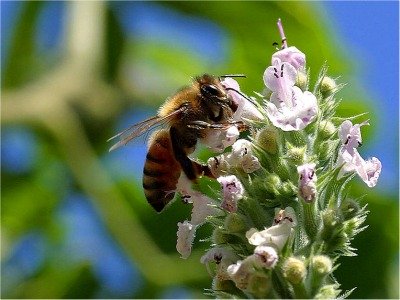
It all started two seasons ago with one quarter-sized piece of sunchoke tuber planted in my dad’s little backyard in the city. That little tuber grew into a 15ft tall, 10ft wide plant with hundreds of yellow flowers covered in bees. I uprooted it at the end of the season and my jaw dropped at the sight of over 100 tubers much larger than the one I originally planted. After giving most of them away, I was left with about thirty tubers that I planted on my beeyard this spring, out in the country. I’m very glad I did, because they bloomed during a dearth here and provided tons of pollen for my bees.

My only problem now is what to do with literally thousands of tubers that will each produce a monstrous plant if not thinned out before spring. Good news: they’re edible! And as it turns out: they’re delicious! I’ve heard alot of stories about how they cause all kinds of intestinal discomfort when eaten, but I found those stories highly exaggerated. I roasted them with just salt, pepper, and olive oil, and they were great. I wish I had made more.

Below is a picture of a patch I planted along the road. Heavy winds knocked them over but they still thrived and flowered like crazy.

If anyone is interested in some tubers, let me know. $5 per pound + shipping. Next fall, you will have tubers coming out of your ears too.

Praying mantis eating a bee

I just love your posts. This one is really intriguing because the plant is beneficial for the bees, birds, goats, and humans on our woodland mini farm. A multi functional plant would be a welcome thing. We are in Leesport between 183 and 61. I work for both major hospitals all over @ their satellites. Perhaps we can cross paths at some point to hand off some chokes?
LikeLiked by 1 person
My rabbit loves them too. Anytime, just let me know. I’m right down the road.
LikeLike
What an awesome experience! What time of the year do you ‘up-root’ them for harvesting?
LikeLike
They can be pulled up anytime after they mature in the first season, so about October I pull some up. Then, I pull them up as needed throughout the winter. As long as the ground isn’t frozen, they come up very easily. Easier and cleaner than potatoes. I just leave a small piece behind in each spot for the next season’s plant. They produce so well, they are hard to keep up with. Probably going to give a bunch to people with livestock.
LikeLiked by 1 person
That is great. I’m going to try to harvest some to eat and some to propagate. Thanks for sharing!
LikeLiked by 1 person